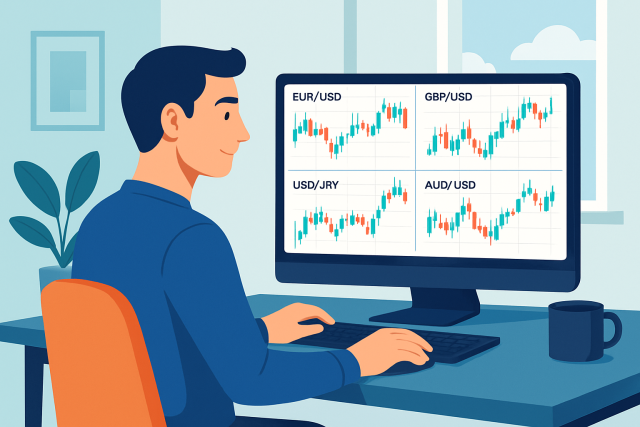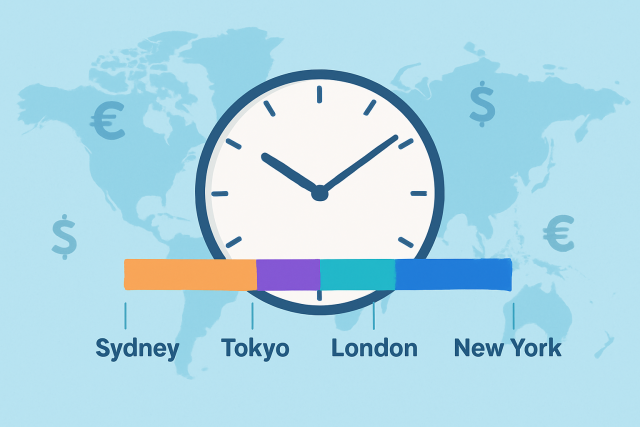
What Is Leverage in Forex and How It Changes Risk
Leverage in forex lets traders control bigger positions with less capital. Learn how it works, its r...

This guide lays out the basics of FX trading, key strategies and common slip-ups designed to help beginners start off on the right foot with confidence.
If you’re just dipping your toes into FX (foreign exchange) trading and looking for fx for beginners, you’ve come to the right spot to kick things off. FX is all about buying and selling different currencies and is the biggest financial market on the planet—yes, bigger than the stock market and more bustling than a busy city street. Whether you’re aiming to boost your personal finances or are simply curious, this guide will break down the essentials in a straightforward, no-nonsense way. We’ll walk you through key terms, explain how trading goes down, and offer practical tips to get you started with real confidence.
The foreign exchange market, often known as FX, is the bustling place where currencies are swapped like a giant global bazaar. It never sleeps and runs 24/7 across every corner of the world. FX trading typically involves pairs like EUR/USD where you buy one currency and sell the other simultaneously—like a financial seesaw. Prices jiggle and dance depending on worldwide economic trends, political happenings, and the overall mood of the market.
| Term | Definition | Example |
|---|---|---|
| Currency Pair | Two currencies traded face-to-face in the FX market, like a dynamic duo constantly changing roles | EUR/USD - Euro against US Dollar |
| Base Currency | The lead actor in a pair; the one you’re buying or selling, setting the stage | In USD/JPY, USD takes the spotlight as the base currency |
| Quote Currency | The sidekick that sets the price for the base, always ready in the wings | In USD/JPY, JPY plays the role of the quote currency |
| Pip | The tiniest price movement you’ll notice in an FX pair, often just 0.0001; small but mighty | EUR/USD creeping from 1.1200 up to 1.1201 |
| Spread | The gap between the buying and selling prices — think of it as the middleman’s cut | If buy is 1.1201 and sell is 1.1200, the spread clocks in at 1 pip |
| Leverage | Using borrowed funds to pump up your position size; a little financial muscle | 50:1 leverage means you’re controlling $50 with just $1 in your corner |
| Lot Size | The size of the trade measured in currency units; it tells you just how big your bite is | Standard lot = 100,000 units, mini lot = 10,000 units |
FX trading happens across a sprawling, decentralized global network where currencies zip around electronically. The market never really sleeps on weekdays—it kicks off in Asia and winds down on the US side, keeping traders on their toes. Traders place orders to buy or sell at bid or ask prices through brokers, who act as the gatekeepers to this vast FX playground.
Starting your FX journey usually kicks off with picking a broker and opening an account. Many brokers offer demo accounts where you can practice without risking a dime—this is a real lifesaver for beginners finding their feet. Once you feel you have got the hang of things you can jump into a live account and trade with real money.
If you are just starting out it is a good idea to stick with simple no-nonsense strategies that help you get a feel for how the market usually moves without throwing you into the deep end. These approaches often mean keeping an eye on clear trends and paying attention to key price levels while managing risk thoughtfully.
Risk management is absolutely vital in FX trading. Relying on stop losses to automatically close out losing trades and tweaking your position sizes based on your account size really helps keep losses in check and prevents your emotions from running wild. This approach acts like a safety net for your trading capital and lets you stick around in the market longer.

A beginner trader carefully studying forex charts with simple, clear indicators to learn market trends.
Almost every FX trader hits a few bumps right out of the gate, but knowing the usual pitfalls can take a lot of the sting—and the losses—out of the process. Newbies often jump the gun or let their emotions run the show instead of sticking to a solid game plan.
Gaining confidence in FX trading usually takes a bit of time, but you can definitely speed things up by steadily building your knowledge and practicing every single day. A clear learning plan paired with consistent practice tends to be the winning combo. Keeping track of your trades and honestly reflecting on what didn’t go as planned is key to getting better over time.
Kick things off by opening a demo trading account. This lets you practice without risking a dime and helps you get cozy with the platform's features.
Make it a habit to trade every day even if it’s just for a few minutes because getting comfortable with placing orders takes time and patience.
Brush up on basic technical analysis and get to know how charts and indicators work. They’re not as scary as they seem once you dive in.
Keep an eye on daily financial news that covers major economies and currency moves. Staying in the loop can really save you from surprises.
Keep a trade journal where you jot down why you made each trade and what lessons you’ve picked up along the way. It’s like having a little diary for your trading journey.
Digging into some trusted resources can really give your knowledge a nice boost. Online courses made for beginners usually lay things out in a clear step-by-step fashion. This makes the whole process a lot less intimidating. Trading communities act like a safety net by offering support and real-world insights you won’t find in textbooks. Beginner books often take their time and patiently break down concepts without leaving you scratching your head.
Struggling to improve your trading performance? Edgewonk's advanced analytics tools are designed to give you the edge you need.
With detailed trade journaling, robust strategy analysis, and psychological insights, you'll gain a comprehensive understanding of your strengths and weaknesses. Don't miss out on this game-changing opportunity.
Traders, it's time to elevate your game. Edgewonk is the ultimate trading journal software designed to empower you with data-driven insights and personalized strategies. Take control of your trading journey and maximize your potential.
15 articles published
Driven by a passion for democratizing trading knowledge, she focuses on behavioral finance and psychological aspects of market decision-making.
Read Posts
Leverage in forex lets traders control bigger positions with less capital. Learn how it works, its r...

Discover a practical, step-by-step approach to start forex trading using essential tools like Tradin...

Discover how forex market opening hours shape trading strategies worldwide. Learn the key sessions,...

Discover how to trade forex for beginners with easy-to-understand concepts, step-by-step guides, and...
